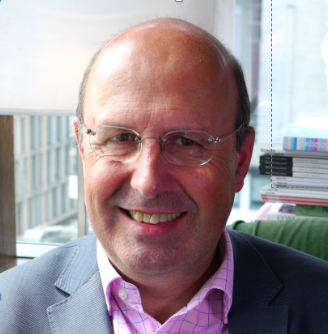You can sign up to our LinkedIn newsletter here
I had seen the Portfolio Executive as a 2nd Half Career option and assumed that 2nd half starts at 45 i.e. half way between 20 – 70 years old.
The 2nd Half Career Option
Typically, the people who approach me about becoming a Portfolio Executive are senior professionals, 45 – 55 years old with many in the 55 – 65 age range. I had assumed that that was the most appropriate age group those who want to take part-time executive responsibility for a function and become the trusted advisor to a CEO.
It is also a life stage for many when they are ready to shift from a full-time permanent employed role and are considering alternatives such as interim, contract and independent consultant. I believe a Portfolio Executive workstyle is a much more attractive option.
Opportunities to start younger
But my assumptions about the best age group have been challenged over the last 12 months. I am beginning to recognise that this is an attractive workstyle for many people who are in the 35 – 45-year-old age group. This isespecially true when they have already established a deep niche specialism and that specialism is in high demand.
So, let me give you 3 examples:
1 – Digital Operations Director
The first was an individual who came to me with a history of doing Digital Transformation programmes for business that had a B2B wholesaling offer and where he had enabled them to develop alongside their B2B wholesaling offer a B2C retail offer.
So just to give you a concrete example (fictitious it gives you the idea) imagine a business that was providing wholesale supplies to organisations like Screwfix and PlumbRite. Screwfix and Plumbrite then provide a retail service to the trade and the consumer. The Digital Transformation digitally enabled their Business-to-Business wholesale offer and also build a separate Business-to-Consumer channel direct to trade and DIY enthusiasts.
He approached me initially with a desire to have a number of non-executive roles in businesses wanting to make this transition. It was clear that in order to underpin those non-executive ambitions, he needed to develop a Portfolio Executive proposition around Digital Transformation. However, it was important to use a job title that could sustain a long-term relationship with the CEO. As a Digital Transformation Director there would be a constant expectation of a project base approach to make a point in time change. As A Digital Operations Director, he was positioned as somebody who was going to build businesses digital operations capability over the long term.
2 – Corporate Finance Director
The second person who came to me was, to me, more of a surprise. This was a very accomplished corporate Finance Director who had increasingly been doing Interim assignments around company transactions. She had experience of preparing companies for disposal or supporting companies post acquisition as well as supporting the transaction itself. For her the critical driver was a lifestyle choice. She wanted to have the opportunity to build her own business as a Portfolio Executive. She was keen to move away from full-time level of responsibility that often extended to 60 hours a week during high intensity transactions. We worked together so that she was able to reposition her offer to engage on a part-time basis across a spread of transaction related clients in ongoing part-time FD roles. Now her mindset has shifted to building a business rather than provide a role, she has recruited her first member of staff. This has enabled her to delegate some of the leg work that she had ended up doing herself and also provide some of the finance function activities for those clients that need more junior finance function services to support the deep expertise and experience that she can bring.
3 – Chief Information Security Officer
The third example may sound a bit esoteric, but this is an increasingly important role. I am sure you have heard of large corporates fined £millions for breaches under the GDPR regulations. The Chief Information Security Officer is a nominated individual who has statutory responsibility for GDPR compliance. The average IT Director is not best placed to take this responsibility as it is a very specialist role. For smaller businesses, particularly those with High-Net-Worth Individuals as clients, a security breach can destroy their reputation and their business overnight.
I was approached by an individual who had successfully helped to build up a cyber security consultancy and now wanted to step out as a part-time CISO. He decided that he wanted to build a team of people around him who could provide some of the technical expertise for specific activities (e.g., penetration testing) to support the CISO function he was building for his clients.
He has successfully continued to build his business throughout CoVid and invested considerably in standards accreditation to extend his range of services.
Conclusions
If you are a professional who has achieved your professional qualifications or has developed a valued and specialised capability and you want to avoid the interim or contractor trap (I won’t mention IR35!) then I’ve changed my mind. By your mid 30’s you may well have the knowledge and experience to be an effective specialist Portfolio Executive and, with the right support, develop that trusted advisor status for multiple clients as a part-time Director of, or Head of, for your specialist capability.

Charles McLachlan is the founder of FuturePerfect and on a mission to transform the future of work and business. The Portfolio Executive programme is a new initiative to help executives build a sustainable and impactful second-half-career. Creating an alternative future takes imagination, design, organisation and many other thinking skills. Charles is happy to lend them to you.
